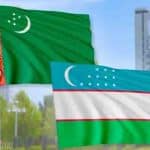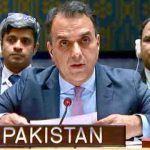Baidoa, Somalia, March 2 (AFP/APP):Under the blazing sun, Salado Adan Mohamed puts the finishing touches to her makeshift shelter, cobbled together from branches and fragments of discarded cloth.
She has just arrived in the southwestern Somali city of Baidoa, the last refuge for people fleeing the worst drought in the country in a decade.
Along with her three children, the 26-year-old mother walked for five days “without eating” to make the 70-kilometre (43-mile) trek from her village to Baidoa.
She settled in Muuri, one of 500 camps for displaced people in the city, where aqals — traditional dome-shaped huts — have been hastily built in recent weeks.
Desperate, hungry and thirsty, more and more people are flocking to Baidoa from rural areas of southern Somalia, one of the regions hardest hit by the drought that is engulfing the Horn of Africa.
According to the UN’s World Food Programme, nearly 13 million people, mostly farmers and herders, are going hungry in the region: 5.7 million in Ethiopia, 2.8 million in Kenya and 4.3 million in Somalia — a quarter of the country’s population.
In Somalia, the UN’s humanitarian agency OCHA said this month that the number of people who have left their homes in search of water, food and pasture has doubled to more than 554,000.
Mohamed says she and her husband saw their crops devoured by swarms of locusts that have ravaged many parts of East Africa in recent years.
Within just a few months, what little they had left was wiped out when the rains failed for a third straight time since the end of 2020.
“We had three camels which died during the drought season, 10 goats — we ate some, others died and the rest were sold — and all five cattle perished because of the lack of water and pasture,” she says.
“We have nothing left.”
With her husband and children, Mohammed started out from her home village for Baidoa, the last hope for many in the stricken region.
But her husband, who has tuberculosis, did not make it all the way. Too weak to continue, he turned back. She has not heard from him since.
The countryside around Baidoa is under the control of the Al-Qaeda linked Al-Shabaab Islamist group, which held the city itself for several years at the height of the insurgency before being driven out in early 2012 by Somali-led forces.
But the persistent insecurity means almost no aid can be sent out of the city.
Even in Muuri, Mohamed says she struggles to provide even one meal a day for her children.
“Sometimes we get something to eat, sometimes not… If there’s not enough, I sacrifice for my children,” she says, a weary look on her face.
Follow the PNI Facebook page for the latest news and updates.








